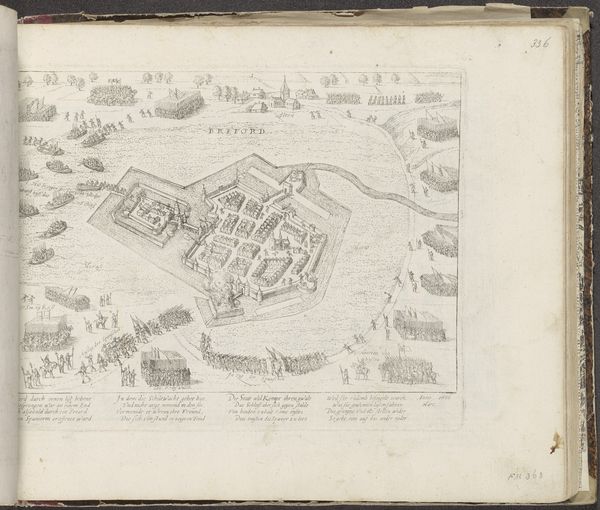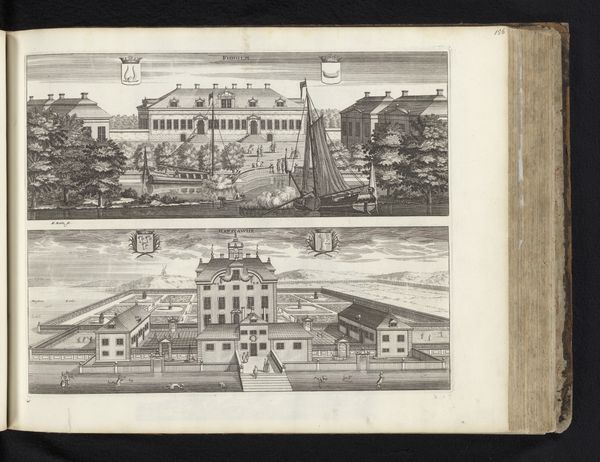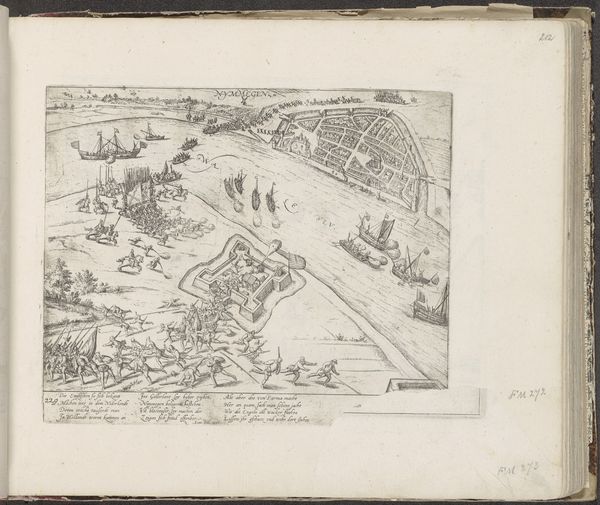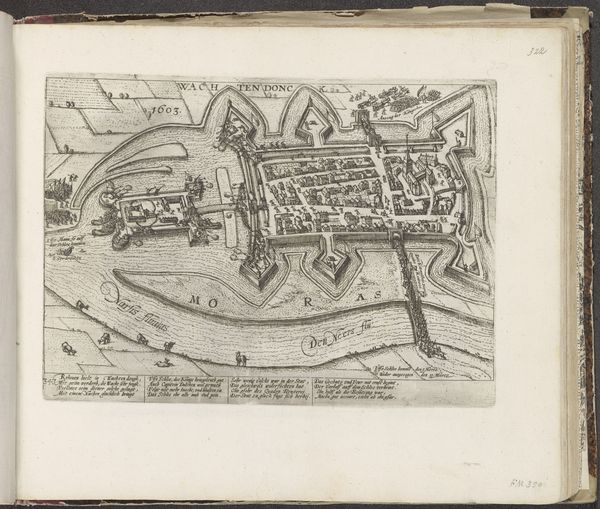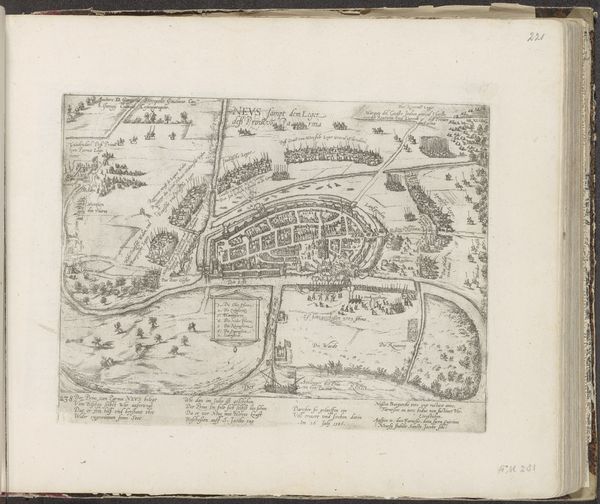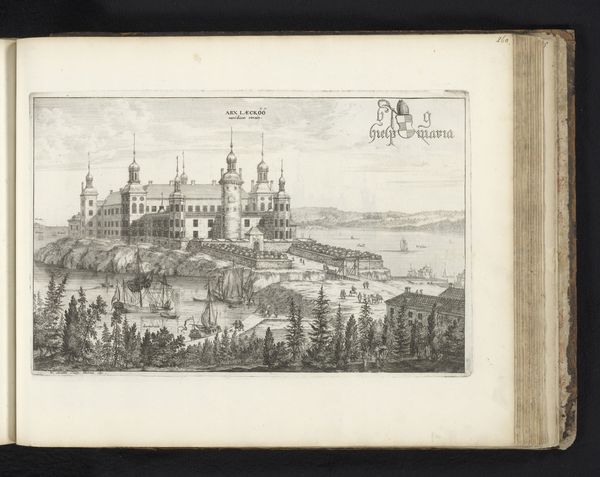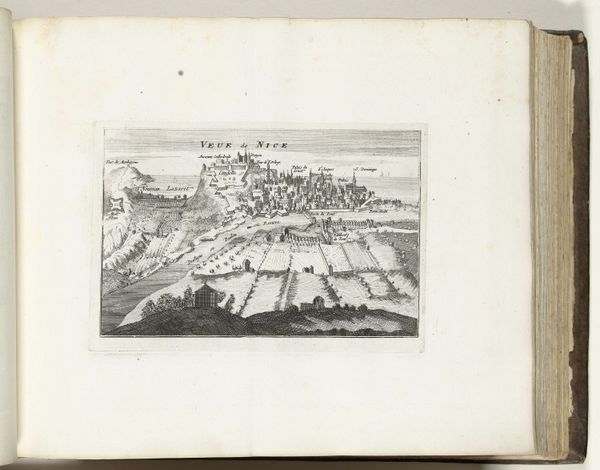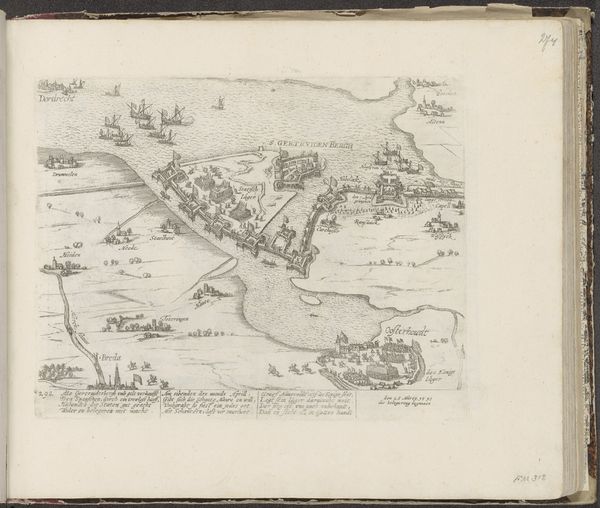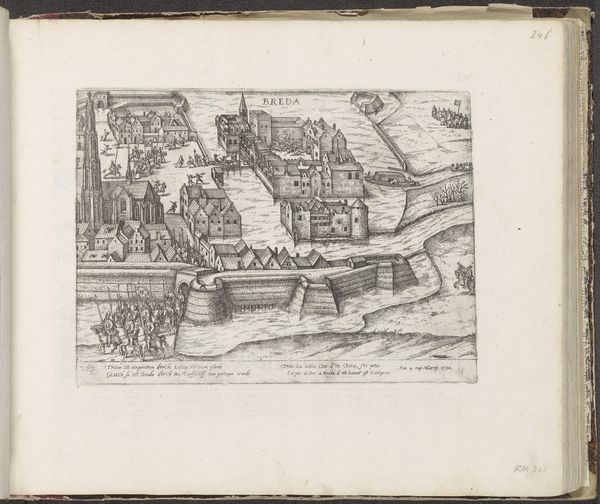
drawing, print, paper, ink, engraving
#
drawing
#
baroque
# print
#
landscape
#
paper
#
ink
#
pen-ink sketch
#
cityscape
#
engraving
Dimensions: height 286 mm, width 343 mm
Copyright: Rijks Museum: Open Domain
Editor: This is Willem Swidde's "Gezicht op fort Älvsborg," from 1697. It’s a print made using engraving, ink, and paper, currently at the Rijksmuseum. The detailed rendering almost feels like an architect's technical drawing rather than a typical landscape. It's striking how the fort dominates the scene. What's your perspective on this piece? Curator: The strategic depiction is quite intentional. Remember, these cityscapes weren't simply aesthetic; they were potent political tools. Älvsborg wasn’t just a fort; it was a statement of power. Consider how this image might have been circulated: Who would have viewed it, and what message was it intended to convey? Editor: Perhaps to project strength? The rigid geometry makes the fort look impenetrable. Was this image meant for internal or external audiences, do you think? Curator: Both, likely. Internally, it reinforced the state's capacity for defense and order. Externally, it acted as propaganda, projecting an image of Sweden as a force to be reckoned with. Note the precision in the rendering of the fortifications; that level of detail aimed to impress. Do you see how the surrounding environment almost diminishes in comparison? Editor: Yes, the city seems secondary. So the “landscape” aspect is really just stage-setting for the main player – the fort as a symbol of power? Curator: Precisely. And that's where understanding the political context enriches our viewing experience. This isn't just a picture; it's a declaration of intent, embedded in ink and paper. Editor: It's fascinating how a simple cityscape can reveal so much about the power dynamics of the time. Thanks, that gives me a completely different appreciation for it. Curator: Indeed. By considering its intended function and audience, we uncover layers of meaning within the image.
Comments
No comments
Be the first to comment and join the conversation on the ultimate creative platform.
